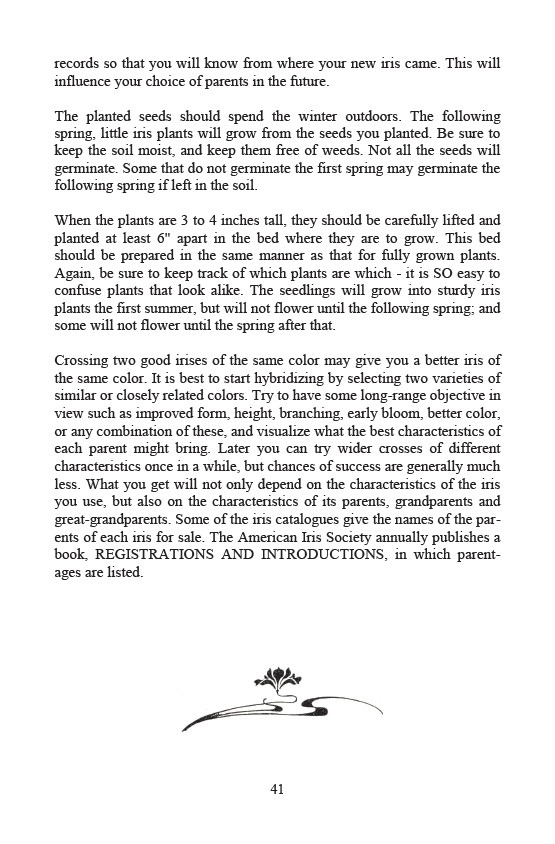
records so that you will know from where your new iris came. This will
influence your choice of parents in the future.
The planted seeds should spend the winter outdoors. The following
spring, little iris plants will grow from the seeds you planted. Be sure to
keep the soil moist, and keep them free of weeds. Not all the seeds will
germinate. Some that do not germinate the first spring may germinate the
following spring if left in the soil.
When the plants are 3 to 4 inches tall, they should be carefully lifted and
planted at least 6" apart in the bed where they are to grow. This bed
should be prepared in the same manner as that for fully grown plants.
Again, be sure to keep track of which plants are which - it is SO easy to
confuse plants that look alike. The seedlings will grow into sturdy iris
plants the first summer, but will not flower until the following spring; and
some will not flower until the spring after that.
Crossing two good irises of the same color may give you a better iris of
the same color. It is best to start hybridizing by selecting two varieties of
similar or closely related colors. Try to have some long-range objective in
view such as improved form, height, branching, early bloom, better color,
or any combination of these, and visualize what the best characteristics of
each parent might bring. Later you can try wider crosses of different
characteristics once in a while, but chances of success are generally much
less. What you get will not only depend on the characteristics of the iris
you use, but also on the characteristics of its parents, grandparents and
great-grandparents. Some of the iris catalogues give the names of the par-ents
of each iris for sale. The American Iris Society annually publishes a
book, REGISTRATIONS AND INTRODUCTIONS, in which parent-ages
41
are listed.